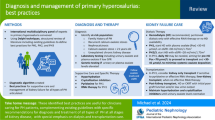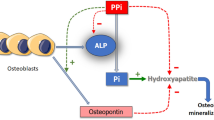Abstract
We previously reported the importance of osteopontin (OPN) in the formation of urinary calculus. Since OPN protein is present in normal kidneys, we investigated the difference in OPN at the DNA level between normal subjects and urolithiasis patients. There has not been any genetic investigation of OPN in familial urolithiasis previously reported worldwide. To confirm hereditary predisposing factors for urolithiasis, changes in OPN DNA within a family were investigated in relation to the presence or absence of urinary calculus. Leukocyte OPN DNA from two normal subjects and five patients with urinary calculus was investigated by SSCP analysis: OPN DNA nucleotide sequence was determined, based on the result of SSCP analysis. As a result, a mutation of GCC to GCT, encoding amino acid position 250 (Ala-250) was found. To confirm the frequency of mutation at this site, OPN DNA was extracted from peripheral blood in 36 normal subjects (Con group), 25 patients with familial urolithiasis (FSF), and 40 patients with recurrent urinary calculus and who had had two or more previous episodes (RSF). The degree of mutation at Ala-250 was then examined by restriction fragment length polymorphism (RFLP) method. As described above, the nucleotide codon encoding the amino acid sequence position 250, Ala-250, was GCC in two normal subjects. This is the original codon. In five patients with urolithiasis it was GCT, showing a substitution of C with T. On examining the frequency of this mutation, the ratio of normal homozygous GCC was 11/36 in the Con group, 1/25 in FSF and 1/40 in RSF. The ratio of heterozygous GCC/GCT was 16/36 in the Con group, 15/25 in FSF and 26/40 in RSF, and the ratio of homozygous GCT was 9/36 in the Con group, 9/25 in FSF and 13/40 in RSF. Furthermore, the gene frequency of the normal codon GCC was 0.528 in the Con group, 0.3 in FSF and 0.35 in RSF, showing a significantly higher incidence in the Con group (P < 0.05). The gene frequency of mutated GCT was 0.472 in Con group, 0.7 in FSF and 0.65 in RSF, showing a significantly higher incidence in urolithiasis patients (P < 0.05). On investigating the inheritance of Ala-250 in five families in which both parent and offspring demonstrated urolithiasis, the nucleotide substitution in Ala-250 in parents with urolithiasis was inherited by their offspring. In all five families the offspring developed urinary calculus. This study showed that there is no difference in OPN structure between the Con group and urolithiasis patients. However, it was predicted that due to the frequency of normally coded GCC being high in the Con group a difference in the amount of OPN might be caused by a difference in transcription velocity between the two groups. Furthermore, it was suggested that examining the inheritance of Ala-250 within a family is a diagnostic method for identifying the predisposing hereditary factors for urolithiasis patients.
Similar content being viewed by others
Author information
Authors and Affiliations
Additional information
Received: 22 November 1999 / Accepted: 9 March 2000
Rights and permissions
About this article
Cite this article
Yamate, T., Tsuji, H., Amasaki, N. et al. Analysis of osteopontin DNA in patients with urolithiasis. Urological Research 28, 159–166 (2000). https://doi.org/10.1007/s002400000112
Issue Date:
DOI: https://doi.org/10.1007/s002400000112




